It’s not easy being a bat – there are dangers everywhere. Bats are often eaten by hawks and owls, and sometimes by raccoons and weasels that sneak up on them when they’re sleeping. There are even greater dangers, though, that threaten entire populations of bats:
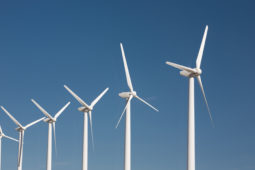 1. Wind turbines can be found all over the world as people work to develop clean energy sources. Unfortunately, the best place for a wind farm is often in the fly-way of migrating bats, and it is during migration that the conflict between bats and turbines occurs. Scientists don’t know why bats can’t avoid the turbines – perhaps they don’t use echolocation to migrate, perhaps echolocation can’t detect low pressure zones created by the turbines – but estimates are that 600,000 to 900,000 bats are killed by wind turbines each year across North America.
1. Wind turbines can be found all over the world as people work to develop clean energy sources. Unfortunately, the best place for a wind farm is often in the fly-way of migrating bats, and it is during migration that the conflict between bats and turbines occurs. Scientists don’t know why bats can’t avoid the turbines – perhaps they don’t use echolocation to migrate, perhaps echolocation can’t detect low pressure zones created by the turbines – but estimates are that 600,000 to 900,000 bats are killed by wind turbines each year across North America.
And it’s not usually impact with the turbine or its blades that kills the bats. Most dead bats found beneath turbines 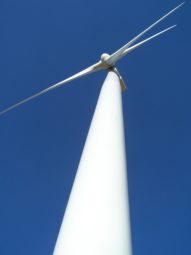 don’t look injured – not like you might expect them to look after flying into a turbine blade moving at 200km/hr!
don’t look injured – not like you might expect them to look after flying into a turbine blade moving at 200km/hr!
It’s the difference in air pressure near the rotor blades that injures the bat’s inner organs, in the same way a scuba diver will become sick or injured if he or she rises to the surface too quickly after a deep dive. Severe barotrauma will kill a bat quickly. Mild barotrauma may injure it, maybe harming the bat’s inner ear, making it unable to use echolocation. And without echolocation, a bat can become lost and unable to hunt, and eventually it will die.
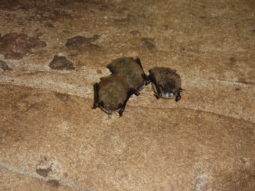
US Fish & Wildlife photo of Little brown bats with White Nose Syndrome
2. White Nose Syndrome is spreading quickly through North American bat colonies. This syndrome is caused by a fungus that grows on the bat’s nose or other places on its body, irritating the bat and disturbing its hibernation. Waking up too often uses up the energy and fat the bat has stored for the winter and it may starve before spring.
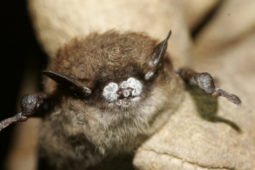
US Fish & Wildlife
The fungus affects species differently. If a Little brown bat colony becomes infected, 90 – 100% of the bats may die over just a couple of years, while a colony of Big brown bats may only lose 30 – 60% to the disease. Today, nine species of bats in 31 states and 5 provinces have been diagnosed with White Nose Syndrome.
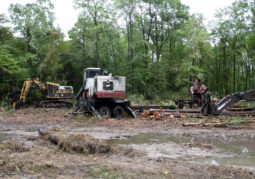
3. Habitat loss is making it more difficult for bats to find a place to roost. Some species, like hoary bats, prefer to hang out in trees, while others like barns or other buildings for shelter. Bats need a safe place to roost for protection from wind and rain and predators.
These are big problems for such a tiny creature, but there are things you can do to help: build a bat box, stay out of caves used by bats, and ask power companies to turn their turbines off during bat migration. And even more important, help others understand how important bats are in our ecosystem!
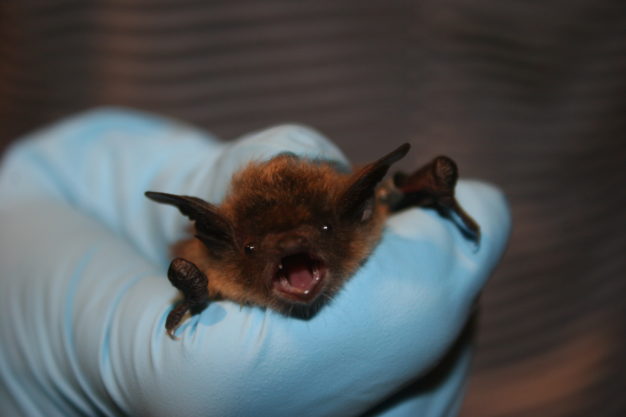
US Fish & WildlifeService
